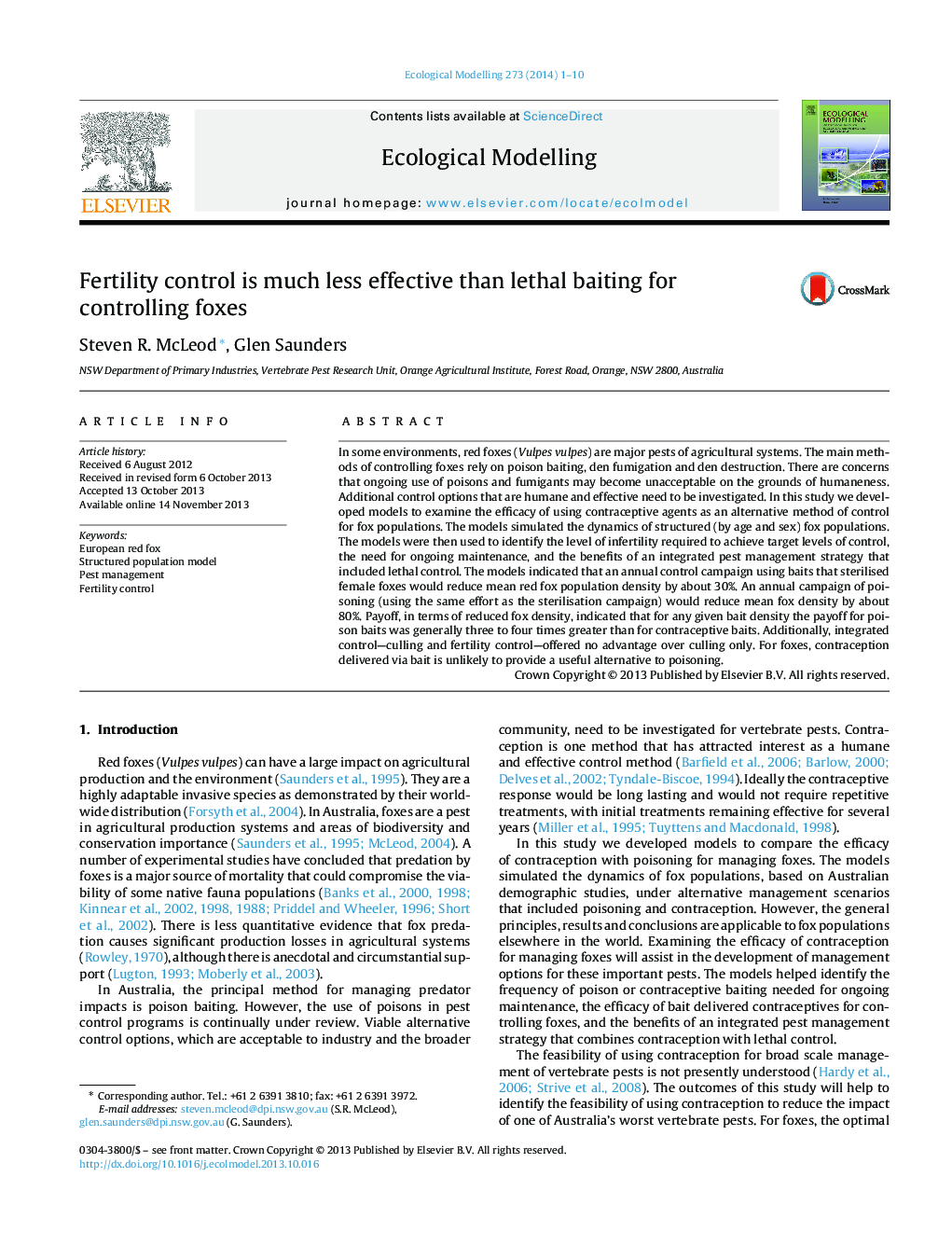| کد مقاله | کد نشریه | سال انتشار | مقاله انگلیسی | نسخه تمام متن |
|---|---|---|---|---|
| 6296900 | 1617473 | 2014 | 10 صفحه PDF | دانلود رایگان |
عنوان انگلیسی مقاله ISI
Fertility control is much less effective than lethal baiting for controlling foxes
ترجمه فارسی عنوان
کنترل باروری برای کنترل روباه بسیار مؤثر است
دانلود مقاله + سفارش ترجمه
دانلود مقاله ISI انگلیسی
رایگان برای ایرانیان
کلمات کلیدی
روباه قرمز اروپا مدل جمعیت ساختاری، مدیریت آفات، کنترل باروری،
موضوعات مرتبط
علوم زیستی و بیوفناوری
علوم کشاورزی و بیولوژیک
بوم شناسی، تکامل، رفتار و سامانه شناسی
چکیده انگلیسی
In some environments, red foxes (Vulpes vulpes) are major pests of agricultural systems. The main methods of controlling foxes rely on poison baiting, den fumigation and den destruction. There are concerns that ongoing use of poisons and fumigants may become unacceptable on the grounds of humaneness. Additional control options that are humane and effective need to be investigated. In this study we developed models to examine the efficacy of using contraceptive agents as an alternative method of control for fox populations. The models simulated the dynamics of structured (by age and sex) fox populations. The models were then used to identify the level of infertility required to achieve target levels of control, the need for ongoing maintenance, and the benefits of an integrated pest management strategy that included lethal control. The models indicated that an annual control campaign using baits that sterilised female foxes would reduce mean red fox population density by about 30%. An annual campaign of poisoning (using the same effort as the sterilisation campaign) would reduce mean fox density by about 80%. Payoff, in terms of reduced fox density, indicated that for any given bait density the payoff for poison baits was generally three to four times greater than for contraceptive baits. Additionally, integrated control-culling and fertility control-offered no advantage over culling only. For foxes, contraception delivered via bait is unlikely to provide a useful alternative to poisoning.
ناشر
Database: Elsevier - ScienceDirect (ساینس دایرکت)
Journal: Ecological Modelling - Volume 273, 10 February 2014, Pages 1-10
Journal: Ecological Modelling - Volume 273, 10 February 2014, Pages 1-10
نویسندگان
Steven R. McLeod, Glen Saunders,
